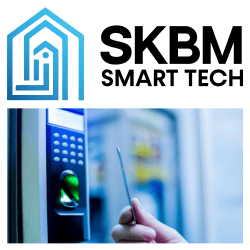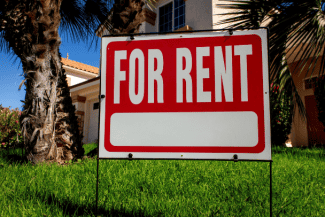Six Ways Revenue Management Software Benefits B and C Properties

Class B and C properties are reaping the benefits of the analytical process for determining the right rent for any property in any market phase and at any time of the year. A number of variables that factor in real-time supply and demand, seasonality, expirations, renewals, pricing elasticity and accurate short- and long-term forecasting are mixed into a formula that produces a rent rate.
The formula may sound complex but the reality is a simple way for operators to improve asset performance to boost occupancy and revenue. Moderately priced or rent-controlled apartments – whether multifamily, student or Affordable – can outperform whether during lease-up or a renovation, or just for maximizing cash.
Watkins Reality Services: Optimizing revenue through market visibility
Watkins Reality Services, known for running some of the nation’s largest owner and fee management portfolios, has reversed the trend of some of its worst performing small or boutique properties with $10,000 or more in monthly added revenue through revenue management.
Montreal, Canada-based Symcor Capital Properties is a Watkins Reality Services client that has proven its effectiveness. Formerly a tax credit property, Symcor’s Lakes at North Port was only 76 percent occupied and was the portfolio’s sore spot before adopting LRO® revenue management system in 2014. Optimizing revenue through market visibility stabilized occupancy in the mid-90 percent range, and new lease rates were signed for 11 percent more revenue. Renewals got an 8 percent lift.
The property is now one of the portfolio’s top performers and an example that Watkins Vice President of Operations Erika Davenport uses when convincing owners that revenue management works regardless of the size of the property.
“It has been a great process at Watkins,” Davenport said. “We have owners inquiring all the time about going on the LRO system, and we feel we have incredible results to show them so we can say, ‘Let’s do this!’ ”
BH Management: Leveraging revenue management through the entire property life cycle
With revenues in excess of $500 million and over 65,000 units under management, BH Management manages A, B and C communities from Arizona to Maryland. VP of Business Intelligence Brandy Daniel frequently encounters the misconception that revenue management is not relevant to certain types of properties, especially C properties, or in certain markets.
Sometimes it’s because owners feel there just isn’t enough data to drive the system.
“We’ve found this not to be the case at all,” says Daniel. “We’re using it effectively at everything from absolutely beautiful A-plus communities to C value-add communities, in all sorts of markets.”
“Because YieldStar is such a robust tool, it can be leveraged throughout the entire property life cycle, from lease up to disposition, to reveal key performance drivers and achieve various ownership goals.”
In addition to optimizing rent and occupancy, YieldStar has delivered other benefits that have become critical advantages. Daniel points to the ability to accurately weigh each individual unit, including its amenities, to arrive at exactly the right price for every unit, every day.
“The system allows you to benchmark to yourself,” she says. “There’s this tendency in our business to let your competitors drive your pricing, and of course market pricing is one of the factors YieldStar looks at, but it keeps you from subjectively adjusting to what the market is doing. It helped us by making it clear that even though we weren’t doing well, our competitors were doing even worse.”
ECI Group: Making a fundamental shift in pricing strategy
Eight years ago, ECI Group wasn’t riding the multifamily wave of a resurgence in rental rates. With revenue management, ECI made a fundamental shift in the pricing strategy for its portfolio of 34 properties totaling 9,000 units in varying markets and began focusing on leasing velocity to set daily pricing.
“As a pricing manager, you need to look at your revenue management systems every day,” said Emily Mask, ECI Groups Associate VP of Operations and Revenue.
Through revenue management, ECI’s revenue has increased from 5 percent to 12 percent across the board. At its concept properties, Class B and C properties built nearly 40 years ago, revenues were 5 percent to 7 percent better in 2015 than the previous year in March 2014.
Small A properties in smaller markets grew 5 percent to 11 percent.
“Our teams are no longer selling in a vacuum,” Mask says. “They are prepared with all the information needed to sell. And that is the end-all, be-all — they have to be able to sell and lease in order for our strategies to be successful.”
RealPage’s YieldStar® and LRO® property management systems have been deployed across 250,000 Class C units in more than 200 markets. Assets have outperformed better than 3 percent above market.
Interesting in adopting a better strategy for your B and C assets? Here are six benefits of revenue management software:
1. Daily Revenue Optimization
Pricing supply congruent with operational activity efficiently aligns pricing with revenue generation for every unit, every day. As operators receive leases, notices and renewals, RealPage Revenue Management helps make sure that every unit is priced optimally.
2. Monitoring Price Elasticity
By measuring the impact that price changes have on supply and demand, revenue management helps incrementally adjust rents, yielding additional revenue. This reduces sharp declines in rents during high supply, generates demand when appropriate and enables rent growth.
3. Advanced Forecasting
Prepare for the future more effectively by accurately forecasting changes in supply and demand from the present to farther into the future. This helps identify softening markets earlier and enables operators to respond faster to changing supply and demand levels.
4. Balancing Supply and Demand
Lease Expiration Management aligns expirations with market demands, so operators can provide prospects with the flexibility and choices they want while maximizing revenue for the assets. Flexible pricing options enable leasing staff to say yes to more prospects, while keeping revenue front and center, and supply aligned with demand.
5. Strategic Renewal Pricing
As lease expirations approach, revenue management helps design renewal pricing appropriate to the actual lease expiration’s future date and seasonality, ensuring that the optimal price for each lease expiration is captured and turnover reduced.
6. Asset Strategy Alignment
Configurable to any investment and asset strategy, RealPage revenue management is powerful and flexible enough to maximize asset performance, agnostic to asset strategies and across all classes and markets.
Source: propertymanagementinsider.com















 Accessibility
Accessibility